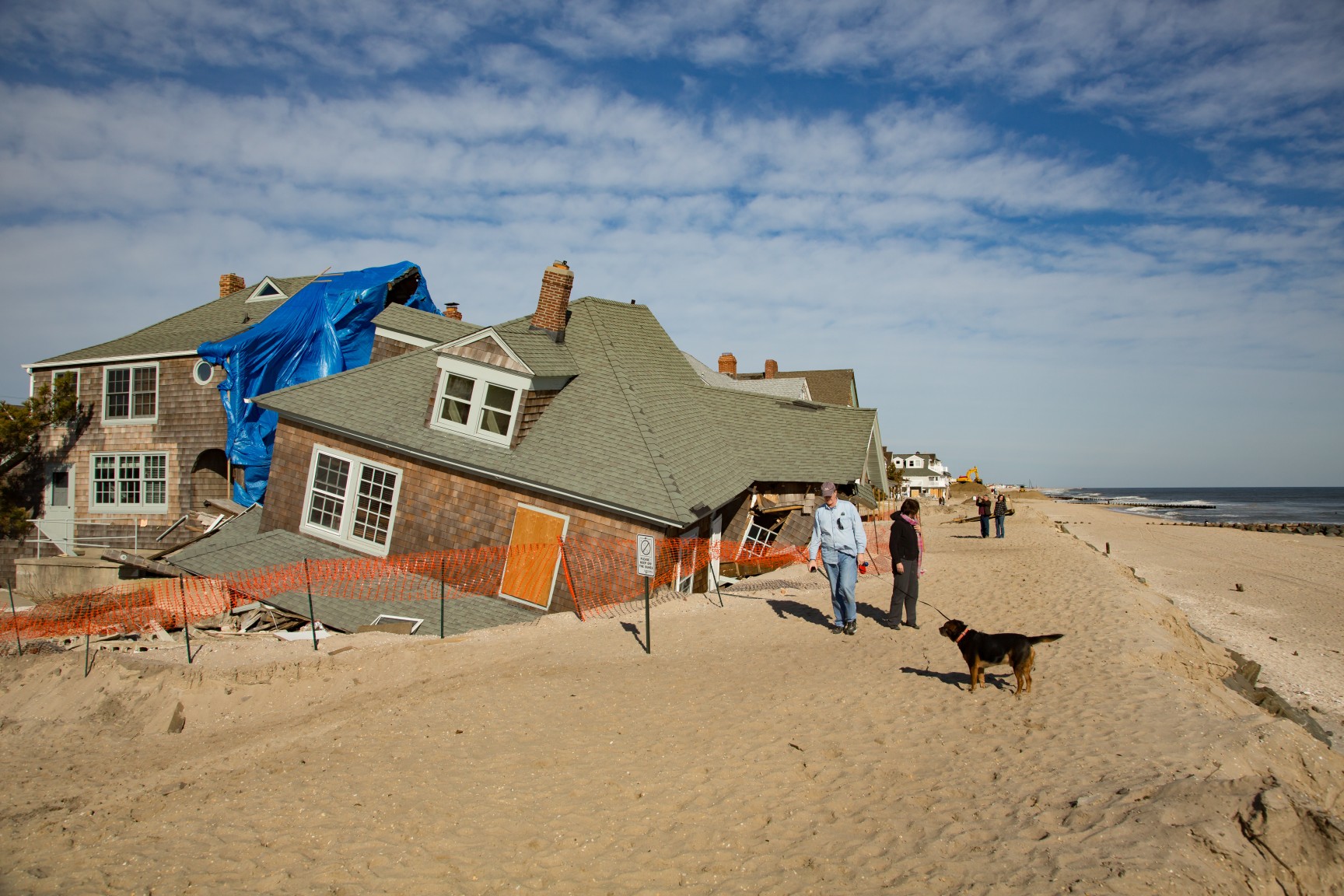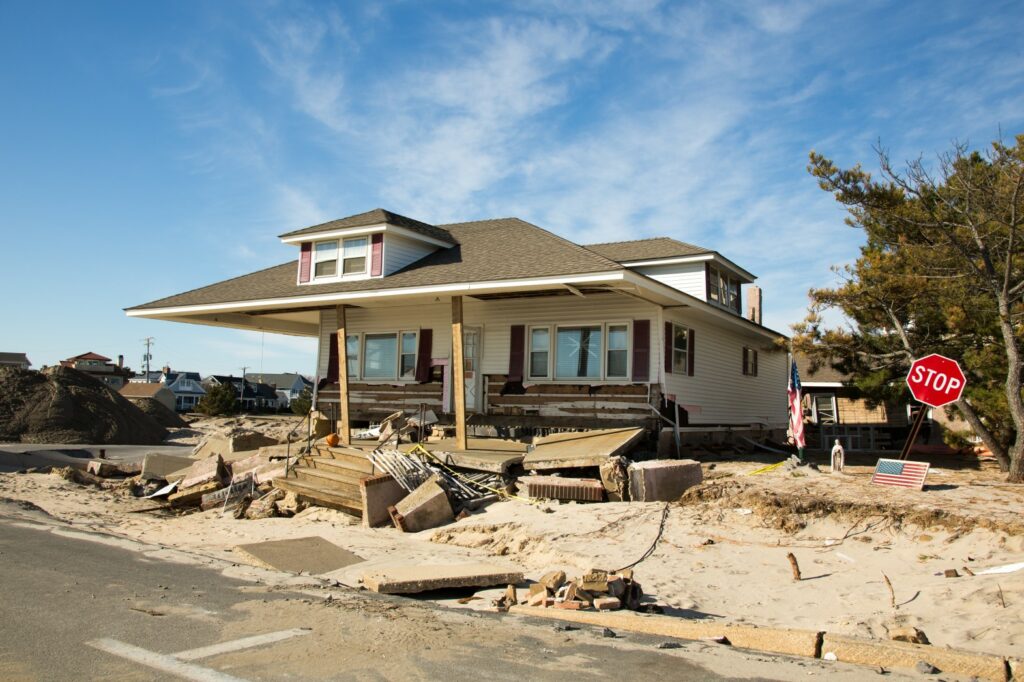
Heavy Rain, Flooding, and Chance of Severe Weather Staring Down the Southern U.S.
January 22, 2024
Posted: November 1, 2022 2:08 pm





Matt Rusinski described the hurricane damage to his Toms River, New Jersey, house as “horrendous.” Then came the time-consuming process of rebuilding, which had to be done twice. He is still ten years into debt despite the state’s approval.
Matt Rucinski, a native of Toms River, New Jersey, has made more progress in his recovery from the devastation wreaked by Superstorm Sandy than anyone else. He is now back in his house, having scrupulously recorded the adjusters’ findings, the architects’ estimates, and the payments he received from state and federal agencies. He followed all the rules to the letter to get the assistance, but now he may have to sell his house to pay back the government for what it claims he was overpaid and double-paid in benefits.
Not only is he not the only New Jersey citizen still grappling with the storm’s heavy financial impact a decade after it struck, given the scope of Sandy’s damage.
Sustained winds of 80 mph were recorded when the superstorm, now known after being downgraded from a Category 1 hurricane to a post-tropical storm before making landfall, hit the coast near Atlantic City on October 29, 2012, sending New Jersey and adjacent states reeling (NHC). Although the superstorm’s winds and rains were devastating, the storm surge made Sandy one of the costliest tropical storms to hit the United States.
The National Weather Service said that the tide gauge broke during the storm; therefore, it is likely that the water levels were higher than 8.9 feet above ground level in Sandy Hook, where the record storm surge occurred. About 150 miles to the southwest of Sandy Hook, in Atlantic City, people recorded a storm surge of 8.9 feet.
To better convey the threat posed by hurricanes than the Saffir-Simpson Hurricane Wind Scale, the AccuWeather RealImpactTM Scale for Hurricanes was developed in response to Hurricane Sandy and, later, Hurricanes Harvey and Florence.
According to Jonathan Porter, AccuWeather’s chief meteorologist, “water kills much more people in storms than wind.” This scale accounts for the effects of water (storm surge and freshwater floods) in addition to wind and the overall economic impact of the storm to provide a complete picture of the potential danger and destruction posed by a given storm.

Superstorm Although Sandy was not considered a hurricane by the NHC when it made landfall, it nonetheless had an AccuWeather RealImpactTM Scale rating of 5.
According to NOAA’s National Centers for Environmental Information (NCEI) and the NHC, Superstorm Sandy caused $81.9 billion in damage in current currency, making it the fourth costliest tropical cyclone in U.S. history.
Due to the long-lasting effects across the mid-Atlantic and New England, AccuWeather estimates that the Economic Impact was as high as $210 billion after adjusting for inflation. According to Dr Joel N. Myers, founder and CEO of AccuWeather, uninsured and unreported losses were quickly in the billions, which doesn’t even account for the damage to the region’s tourism industry.
As a result of the flooding, Rusinski could not return to his area for about a week. One of the earliest indicators of the damage he would uncover inside was a waterline that had formed just under the doorknob of his front door after the floodwaters had retreated.
After receiving a payment from his flood insurance that was far less than the cost of repairs, Rusinski had to take out personal loans and an SBA loan to pay for the reconstruction of his first floor. After that, applications for the Homeowner Reconstruction, Rehabilitation, Elevation, and Mitigation (RREM) Program, supported by federal block funds dispersed by the Department of Housing and Urban Development, opened.
Since the program’s maximum prize per individual was $150,000, Rusinski applied and was approved for this sum on the condition that he remove the first level he had recently constructed with the previous funding and instead assemble on top of the second floor in the event of another flood event.
“They [the RREM Program] approved what I showed them, precisely what I did. I showed them some of the architectural drawings I’d been working on. When I finally provided them with the contractor receipts for everything I was doing, and they gave the go-ahead for the work, only then did they start paying me, “As Rusinski put it.
An RREM Program inspector was supposed to return to Rusinski’s house within a few months after the repair was completed to examine and verify the results. The program would remove the lien if Rusinski’s house passed the inspection. But when the time arrived, he got some unexpected news.
The state of New Jersey sent Rusinski a notice stating that he owed $60,000 and had x amount of years to pay it back.
The program stated there was an overpayment because his previous SBA grant provided him similar benefits.
As a general rule, financial aid programs prohibit recipients from collecting benefits from multiple sources or using funds from many sources for the same purpose. The RREM Program quoted $19,000 in duplication of help, even though Rusinski had already utilized the money from the SBA loan to rebuild the first floor that the program had mandated he pulls down. In addition, it claimed that Rusinski should have only earned $90,000 from the program due to an over-disbursement of cash.
“As far as I can tell, they had a repayment plan that would span three years. I could not make that much money back in three years or even five. “It was Rusinski who remarked. For help, he joined the New Jersey Organizing Project (NJOP), a group that campaigns for clawback forgiveness in the wake of the disaster.
Clawbacks, or the forced return of disbursed payments, affect many Sandy victims, not just Rucinski.
To this day, Representative Frank Pallone Jr. reports that over 1,800 households in New Jersey owe a total of $73 million to different federal programs and loans (D-NJ). A provision that might permanently relieve people of these costs was included in a spending package passed by the House of Representatives in July this year. If the Senate approves HR 8294, a provision backed by Pallone, Watson Coleman, and Kim will prevent some Sandy victims from having to repay federal disaster relief funds.
According to the announcement, 882 of the affected homeowners’ debts will be erased if the Secretary approves, totalling more than $28 million.
The people of New Jersey “are still on the hook for huge amounts of money by no fault of their own after Superstorm Sandy devastated their communities,” Pallone added. The author writes that the federal government should not demand repayment of Sandy-related loans and grants during the current economic downturn.
Although HUD-funded initiatives are a primary focus of recovery efforts, they are not the only ones. The Individuals and Households Program, run by the Federal Emergency Management Agency (FEMA) and the Department of Homeland Security (DHS), is frequently one of the first programs to provide financial aid and direct services to people affected by disasters to meet basic needs and supplement disaster recovery efforts. Funding for short-term lodging, house repairs, uninsured or under-insured disaster-related expenses, and risk-reduction measures like water heater lifts and roof patching after severe storms are all examples of what this could look like.
Many people will not make ends meet until insurance claims are settled, and other disaster relief measures are enacted, but this program will help them get by.

January 21, 2024

January 19, 2024

January 18, 2024